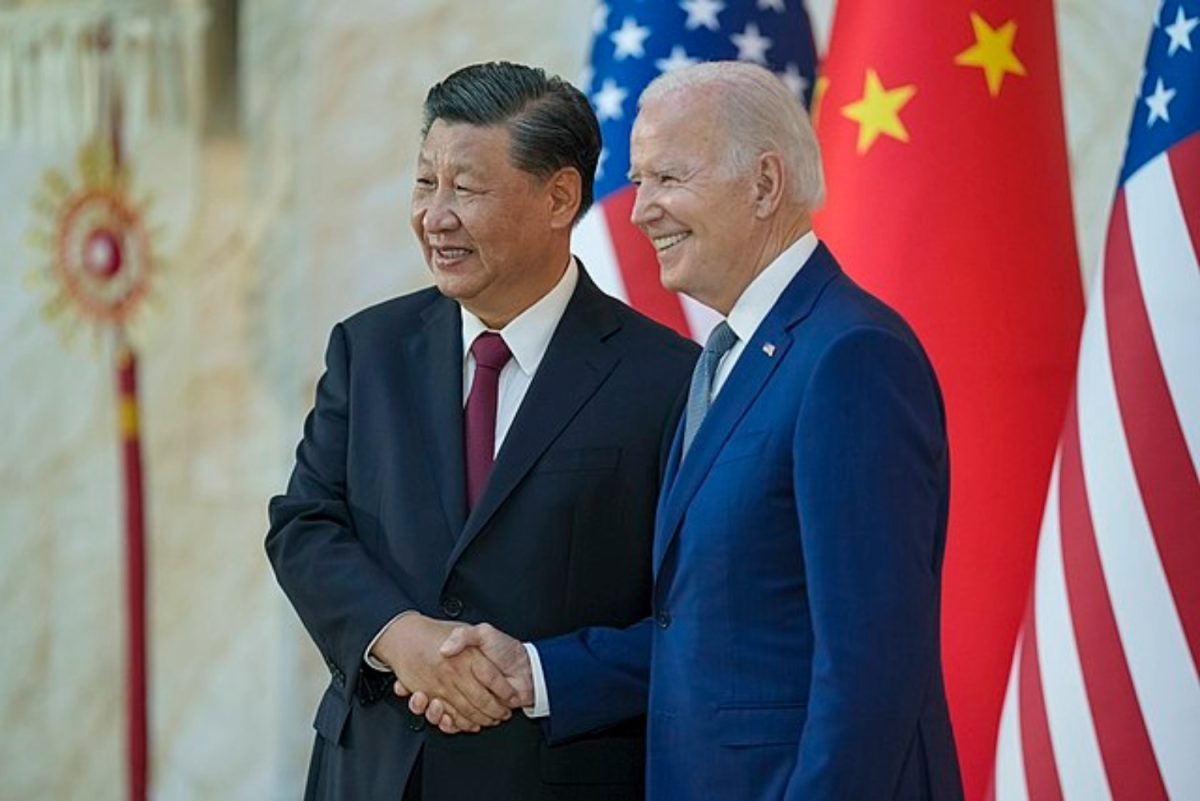The issue of climate change has become a battleground for Democrats and Republicans. From deciding on how to fight climate change to whether or not it is a pertinent issue, the disagreement reveals the deep political divide in the United States. Democrats lean toward the prioritization of climate change, while Republicans find it less concerning, according to research by Elaine Kamarck, the director of the Center for Effective Public Management at Brookings.
The National Oceanic and Atmospheric Administration, or NOAA, found that humans have significantly contributed to Earth’s rising temperatures and are burning greenhouse gases at an unsustainable rate. While some still find this up for debate, most people recognize climate change as a real and potential threat but contest the importance of its prioritization, according to the Pew Research Center.
The presented data clearly illustrates the need for action. Those on both ends of the political spectrum must recognize that the only way for impactful change to occur is with compromise and concessions from each side.
A common argument on the Republican side is that renewable energy sources, specifically windmills, kill wildlife. A study on bird and bat mortality in areas with wind turbines from the National Library of Medicine found that an estimated 140,000 to 679,000 birds are killed by windmills each year in the U.S.
However, the cause of these deaths cannot completely be attributed to wind turbines. According to a study in Nature Communications, cats kill 1.3 to 4 billion birds annually. Additionally, a study in BioOne found that collisions with buildings and windows have resulted in 100 million to 1 billion bird deaths. Cars also contribute to these numbers, killing between 89 and 400 million birds, according to the U.S. Fish and Wildlife Service.
Cats, building collisions, and cars kill approximately 1.49 billion to 5.4 billion birds each year, compared to the 140,000 to 679,000 by windmills, so the citation of wildlife deaths is not a compelling argument against renewable energy sources.
Additionally, a general right-wing consensus has been that if the U.S. cannot come to an agreement with China and get them to start reducing emissions, it won’t be worth it to pass legislation to reduce American emissions.
China is the world’s largest annual greenhouse gas emitter; according to Statista, the country emitted 12.3 billion tonnes of carbon dioxide, which was 27% of global emissions in 2022.
In 2020, Chinese President Xi Jinping pledged to “peak carbon dioxide emissions before 2030” and “achieve carbon neutrality before 2060,” meaning that until this deadline, China’s emissions will continue increasing.
In November 2022, the U.S. and China recommenced discussion of climate change issues and how to proceed. However, many Republicans argue that since China has not made significant strides, the U.S. also does not need to do anything.
However, this reasoning is flawed for two reasons. First, China has made other climate strides despite not cutting back on overall emissions.
They recognize the importance of climate change, identify it as an agenda item, and have made significant advancements in sustainable transportation.
BYD is an electric vehicle company founded in China and has now surpassed Tesla in car production, selling 3.02 million cars in 2023, compared to Tesla’s 1.81 million.
Furthermore, at the end of 2017 in Shenzhen, China, the city’s fleet of over 16,000 buses was entirely electric, making it the first city in the world to have fully electric public transport. This has reduced Shenzhen’s dependence on fossil fuels as the buses consume 72.9% less energy than diesel buses, saving approximately 366,000 tons of coal annually.
The second reason is that the U.S. is the second largest contributor to carbon dioxide emissions worldwide. According to Statista, in 2022, the U.S. produced 4.9 billion metric tons of emissions, approximately 13% of the world’s 37.5 billion tons of carbon emissions.
Thus, regardless of what China is doing, implementing or continuing measures to reduce emissions in the U.S. is imperative. As the second contributor to global emissions and a developed country, the U.S. should lead the global fight against climate change, not wait for others to step up.
According to Bernice Lee, a climate policy expert in Britain, many countries view the U.S. and China’s disagreement and inaction as reasons to also not do anything. Any action is better than no action, especially since the U.S. is a model for other parts of the world.
On the Democratic side, additional arguments and pushback hinder the success of climate change policies.
Many recognize that there is no perfect solution. Any programs or policies implemented will have drawbacks, which must be evaluated, but this does not point to total inaction as a solution. The results can and will create a better environment.
Renewable energy can disrupt land use and wildlife habitats, negatively affecting many ecosystems, according to the National Academies Press. Large-scale renewable energy projects require an excess of land, especially for wind and solar energy. Sometimes, this results in ecosystem disruption, harming wildlife.
Although this has increased pushback from Democratic environmentalists, it should not be a stopping point. Despite the potential drawbacks, there are mitigation efforts that the government can simultaneously implement to protect wildlife to the greatest extent possible.
Not acting and capitalizing on green energy is more detrimental to the environment than waiting. According to the National Park Service, rising temperatures upset the balance of wildlife ecosystems. Similarly, increased weather events negatively impact animal habitats, sometimes even destroying them, like polar bears and the melting of arctic ice caps.
Burning fossil fuels contributes to these changes, accounting for over 75% of global greenhouse gas emissions and directly worsening climate change. Renewable energy sources are essential in combating this, which is why sacrifices, with appropriate safety measures and considerations, need to be made.
Thus, it is clear that the most crucial course of action is to start making change, and compromise will help us do this so strides can be made toward a more sustainable future.
Switching to renewable energy is not a fast transition. In the U.S. and elsewhere, transitions from one primary type of fuel to another have taken 50 to 60 years, such as the transition from wood to coal, then coal to oil, according to Scientific American. From 1990 to 2012, the world’s energy from fossil fuels changed remarkably little, from 88% to 87%, and renewables generated less than 10% of the U.S. energy supply in 2011.
While this transition is possible and essential, it clearly will not happen overnight. For the sake of our planet’s future, politicians must find a way to compromise so the U.S. can truly begin its fight against climate change.












